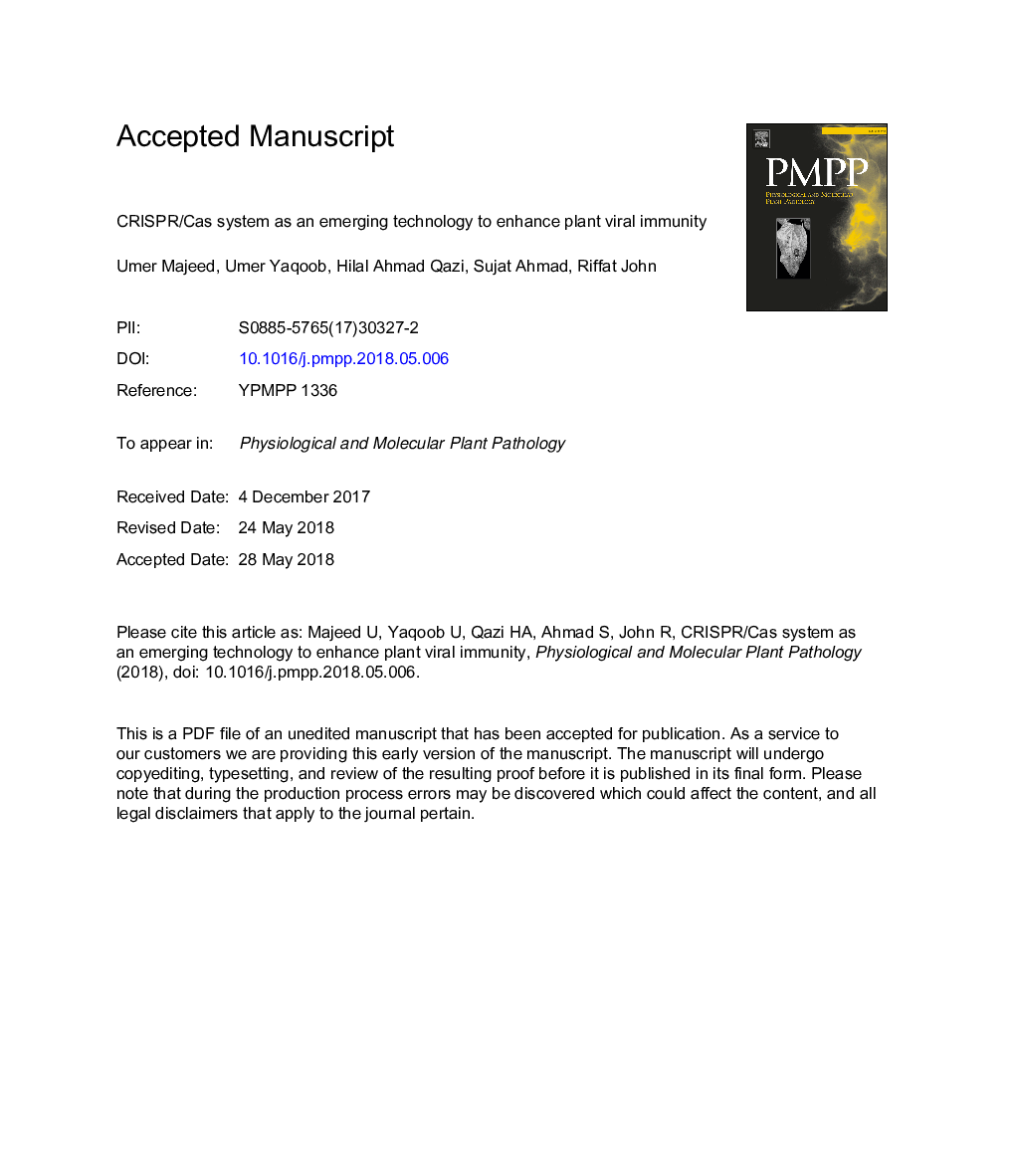| Article ID | Journal | Published Year | Pages | File Type |
|---|---|---|---|---|
| 8649185 | Physiological and Molecular Plant Pathology | 2018 | 29 Pages |
Abstract
The clustered regularly interspaced short palindromic repeats/CRISPR-associated (CRISPR-Cas) system is an immunity mechanism against the foreign genetic elements such as virus and plasmids present in bacteria and archaea. This technique is being used to introduce single point mutations (deletions or insertions) in a particular target gene, via a single gRNA. However, using a pair of gRNA-directed Cas9 nucleases, it is also possible to induce large deletions or genomic rearrangements, such as inversions or translocations. Various customised nuclease systems are now available for accurate genome engineering making the CRISPR/Cas system the most user friendly genetic engineering tool. In this review, we have described the mechanism of CRISPR/Cas9 system and its types. Besides, we have laid special emphasis on how CRISPR/Cas9 system can be used to introduce viral immunity in light of the recent research on CRISPR/Cas9-mediated viral interference in different plants. We close by highlighting the crucial questions regarding CRISPR/Cas9-mediated viral immunity.
Related Topics
Life Sciences
Agricultural and Biological Sciences
Plant Science
Authors
Umer Majeed, Umer Yaqoob, Hilal Ahmad Qazi, Sujat Ahmad, Riffat John,
